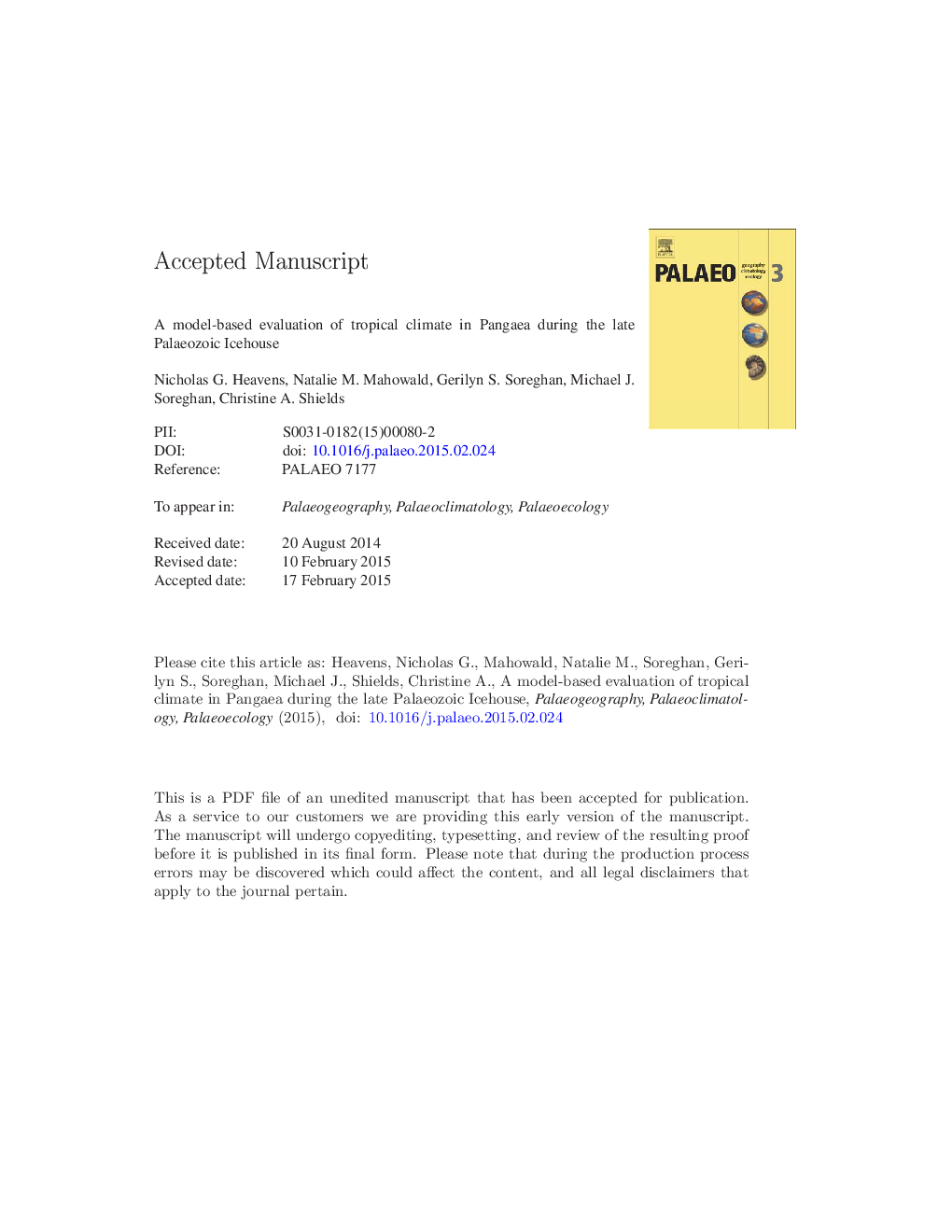| Article ID | Journal | Published Year | Pages | File Type |
|---|---|---|---|---|
| 6349748 | Palaeogeography, Palaeoclimatology, Palaeoecology | 2015 | 75 Pages |
Abstract
The late Palaeozoic ice age (LPIA) is the Earth's penultimate “icehouse climate.” Geological proxies for tropical Pangaean climate during the LPIA are significantly modulated on 100-400Â kyr and sub-100Â kyr scales. In addition, some geological proxies suggest that equatorial continental areas may have been colder and more arid during LPIA glacial intervals than during late Cenozoic glacial intervals. Furthermore, the relationship between polar and tropical climate variability remains controversial. The climate dynamics underlying these phenomena are only partly understood. Nevertheless, past modeling of LPIA climate has suggested that precipitation near the Equator was modulated by monsoonal circulation that itself was modulated by orbital variability. Here, the Earth's climate during Asselian-Sakmarian time (299-284Â Ma) was simulated with the Community Climate System Model version 3 (CCSM3). These simulations address model climate sensitivity to direct and indirect effects of glaciation as well as variability in the Earth's orbit. The results of these simulations suggest that sea level and orbitally forced monsoon variability were the primary controls on tropical precipitation when ice sheets were confined to polar latitudes. Any impact of orbital forcing on glaciation therefore could have led to aliasing between glacial and monsoonal effects in particular regions, perhaps explaining contrasting geologically-based interpretations of how tropical climate responded to glaciation. Glaciation of the Central Pangaean Mountains would have led to widespread cold and aridity in equatorial Pangaea, but forming these glaciers would have required an unknown additional climate forcing with an unknown impact on tropical precipitation.
Related Topics
Physical Sciences and Engineering
Earth and Planetary Sciences
Earth-Surface Processes
Authors
Nicholas G. Heavens, Natalie M. Mahowald, Gerilyn S. Soreghan, Michael J. Soreghan, Christine A. Shields,
